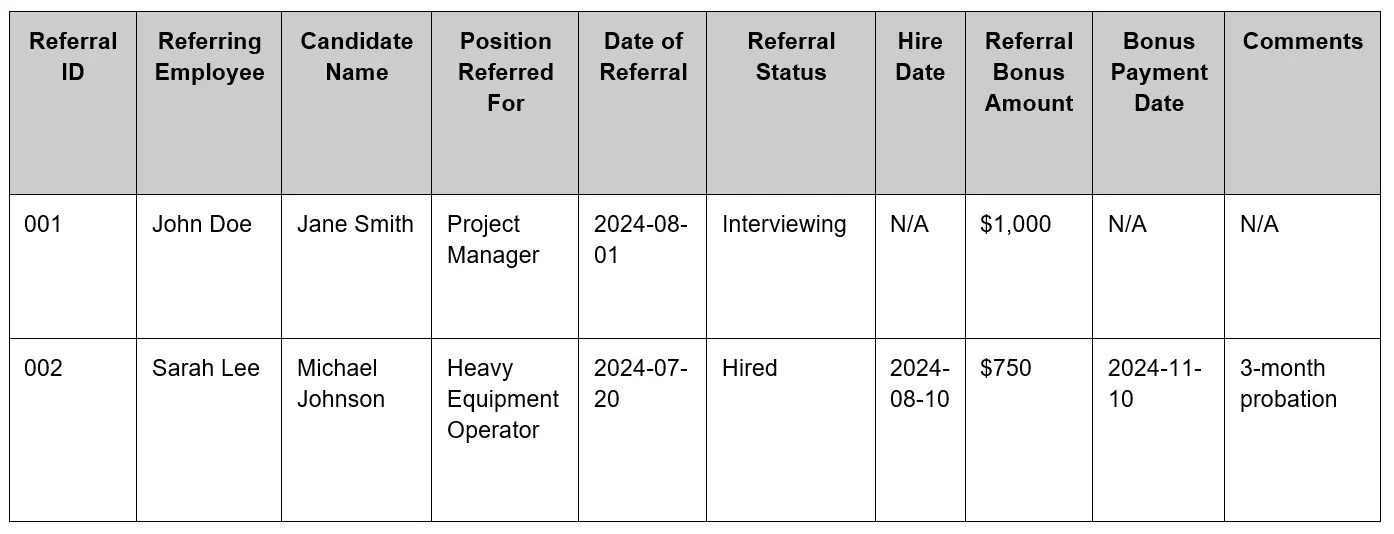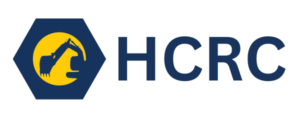What is an Employee Referral Program?
An employee referral program is a structured method for sourcing new hires through recommendations from existing employees. These referrals often result in quicker, more cost-effective hires and offer benefits such as increased employee engagement and higher retention rates. Successful referral programs typically offer a bonus as a reward when a referred candidate is hired and remains with the company for a set period.
Initial Guidelines for Setting Up a Referral Program
1. Referral Bonus Amount
- Determine Payout: Decide how much you want to pay for each successful referral. Bonuses typically range from $250 to $5,000 depending on the role and industry.
- Seniority-Based Payouts: Consider whether you want to vary the referral bonuses based on the seniority or criticality of the position. For example:
- Entry-Level/Junior Positions: $250-$500
- Mid-Level/Skilled Positions: $500-$1,000
- Senior/Hard-to-Fill Roles: $1,000-$5,000
2. Payment Structure
- One Lump Sum: Pay out the entire bonus after the new hire completes a certain milestone (e.g., 90 days or 6 months).
- Staggered Payouts: Pay the bonus in increments. For example:
- 50% at the time of hire and 50% after six months.
- A third upon hire, a third after six months, and a third after a year.
3. Eligibility Criteria
- Eligible Employees: Define which employees are eligible to participate in the program (e.g., full-time, part-time, contract employees). Typically, all employees can participate unless there’s a conflict of interest.
- Non-Eligible Employees: Consider excluding HR personnel, senior leadership, and direct hiring managers from the program to avoid conflicts of interest.
4. Referral Validity Period
- Bonus Eligibility Timeframe: Establish how long a referral remains valid for a bonus payout. For example:
- Referrals are eligible for the bonus if hired within 12 months of submission.
5. Tracking System
- Tracking Referrals: Implement a system to track referrals efficiently. Options include:
- Applicant Tracking Systems (ATS): Many ATS platforms have built-in referral tracking.
- Customer Relationship Management (CRM) System: Use your CRM to create a separate group for referral candidates to stay engaged.
- Manual Tracking (Spreadsheet): For smaller teams, a detailed spreadsheet can suffice. Make sure to track referral submission dates, hiring status, and payout dates.
Sample Spreadsheet for Tracking Candidate Referrals
Here is a sample structure for a spreadsheet that you can use to track candidate referrals:

6. Communication & Follow-Up
- CRM for Candidate Engagement: Ensure you maintain communication with referral candidates who may not be immediately hired.
- Mass Emailing: Create a group email list to send out regular updates about job openings, your company’s growth, or other potential opportunities for engagement.
7. Provide Tools for Employees
- Template Spreadsheet: Offer a downloadable template for tracking referral submissions, status, and bonuses (e.g., “Download our Referral Program Spreadsheet here”).
Steps to Creating an Effective Employee Referral Program
1. Collaborate with Management
- Secure Approval: Work closely with senior leadership to ensure the referral program aligns with your company’s overall hiring strategy and budget. Present a plan that outlines the expected benefits, resources required, and goals for the program.
2. Develop a Simple, Clear System
- Outline the Process: Ensure the process for referring candidates is straightforward and accessible for all employees. Options may include:
- Online Referral Portals
- Email Submissions
- Paper Forms (if applicable in field-based settings)
3. Create SMART Goals
- Set Specific Goals: Define measurable outcomes such as:
- Number of referrals per quarter
- Percentage of new hires from referrals
- Referral hire retention rate (e.g., 90% retention after one year)
4. Offer a Range of Incentives
- Cash Bonuses: Offer tiered monetary bonuses depending on role and seniority.
- Non-Cash Rewards: Include incentives such as:
- Extra vacation days
- High-end restaurant dinners
- Event tickets or experiences
- Charitable donations on behalf of the employee
Consider organizing referral contests to motivate employees further, offering larger rewards for those who refer the most successful candidates in a given timeframe.
5. Communicate the Program
- Launch Event: Hold a kickoff meeting or event to explain the program and its benefits.
- Documentation: Create clear, concise documentation on your internal communication channels, such as an internal website or company newsletter. This should outline the referral process and provide links to available job openings.
- Reminders: Regularly remind employees of the program whenever a new job opening occurs, using emails, bulletin boards, and other internal platforms.
Benefits of an Employee Referral Program
- Hire Skilled Employees: Referrals are often more aligned with company culture and job requirements because current employees already understand the expectations.
- Boost Employee Engagement: Giving employees a role in recruitment can foster pride and ownership in your company’s success.
- Improve Retention: Referred employees tend to stay longer, thanks to a strong personal connection within the company.
- Reduce Recruitment Costs: Referral programs can significantly reduce the cost-per-hire compared to traditional recruitment methods.
- Faster Hiring: Employees can quickly identify suitable candidates, often speeding up the recruitment process.
- Strengthen Employer Brand: By leveraging employees’ networks, you enhance your company’s reputation as a desirable workplace.
Examples of Employee Referral Program Messages
- Example 1: “Know someone who would be a great fit for our open roles? Refer them, and if they’re hired, you’ll receive a $1,000 bonus! Plus, you’ll be helping us build an even stronger team.”
- Example 2: “Refer a friend, and if they’re hired, we’ll give you a gift card to your favorite restaurant and two extra vacation days. It’s our way of saying thank you for helping us grow!”
- Example 3: “Do you know anyone who would thrive in our collaborative work environment? If your referral is hired for the Accountant role and stays for six months, you’ll receive a $500 bonus.”
Frequently Asked Questions
1. How Effective Are Employee Referral Programs?
- When executed well, employee referral programs can lead to faster, more reliable hires. Studies show that referrals often have higher retention rates and cost less to hire than candidates sourced through traditional recruitment methods.
2. What Do Employee Referral Programs Cost?
- The primary expense is the reward offered for successful hires, which is typically much lower than the cost of external recruitment or hiring agencies.
3. What Percentage of Hires Should Be Employee Referrals?
- A healthy referral program can account for 30-40% of your total hires, reducing the reliance on external recruitment channels.






